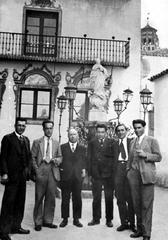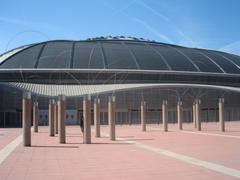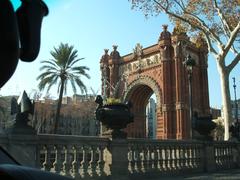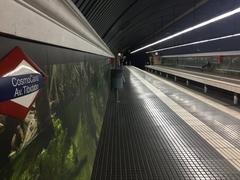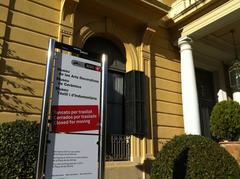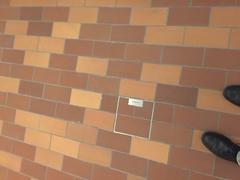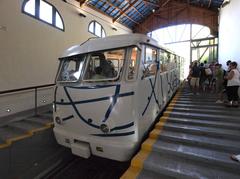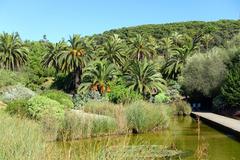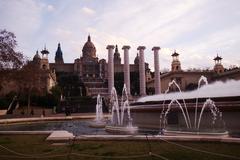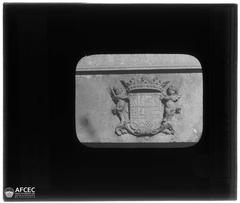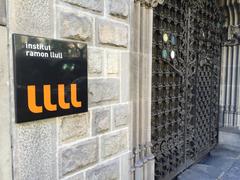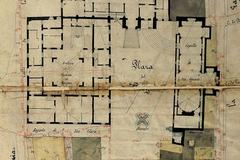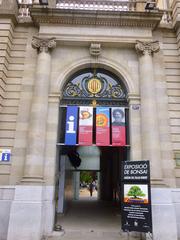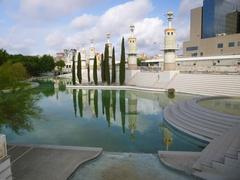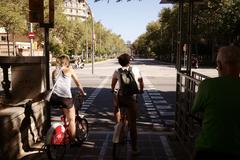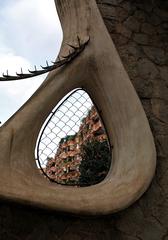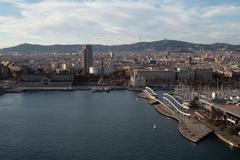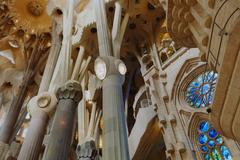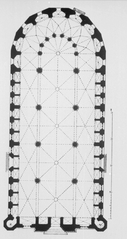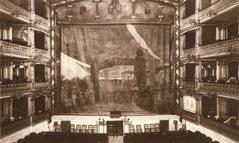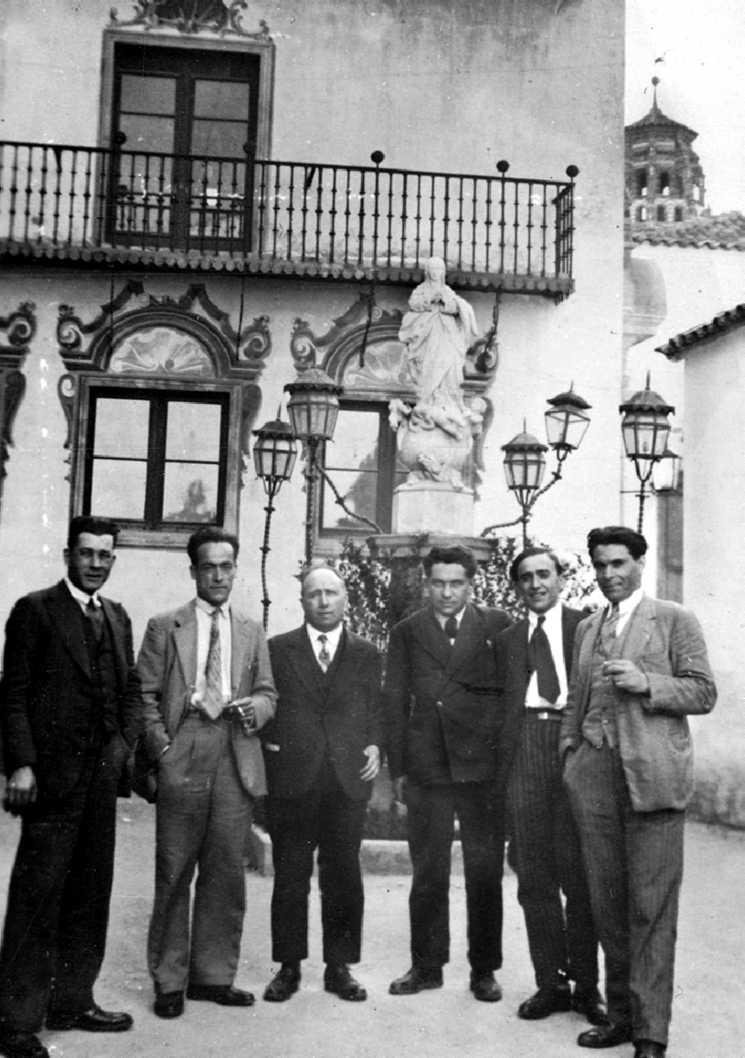
Plaça Aragonesa Visiting Hours, Tickets, and Historical Insights
Date: 17/07/2024
Introduction
Plaça Aragonesa, situated in the vibrant heart of Barcelona, Spain, is a remarkable public square that embodies the city’s rich historical and cultural tapestry. This square is a quintessential reflection of Barcelona’s architectural evolution, with its roots tracing back to the early 19th century as part of the ambitious Eixample project designed by Ildefons Cerdà. The Eixample project aimed to modernize Barcelona by expanding beyond its medieval walls, creating a grid-like pattern of streets and squares to accommodate the growing population (Barcelona City Council).
The architectural significance of Plaça Aragonesa is deeply influenced by the Modernisme movement, which flourished in Catalonia during the late 19th and early 20th centuries. Esteemed architects like Antoni Gaudí and Lluís Domènech i Montaner contributed to the aesthetic of the surrounding buildings, making the square a showcase of intricate details, organic forms, and innovative materials (Modernisme Barcelona).
Throughout its history, Plaça Aragonesa has been a witness to numerous significant events, especially during the Spanish Civil War, when it served as a focal point for political rallies and demonstrations. The resilience and determination of the Catalan people are etched into the square’s legacy, particularly through periods of post-war reconstruction and modernization under the Franco regime (Spanish Civil War History).
Today, Plaça Aragonesa stands as a bustling center of activity, drawing both locals and tourists. It hosts a plethora of cultural events such as music festivals, art exhibitions, and traditional Catalan celebrations, preserving and promoting the rich heritage of the region (Catalan Culture). This guide aims to provide a comprehensive overview of Plaça Aragonesa, including its historical background, architectural highlights, cultural significance, and practical visitor information to enhance your experience.
Table of Contents
- Origins and Early Development
- Architectural Significance
- Historical Events
- Post-War Reconstruction and Modernization
- Cultural and Social Impact
- Modern-Day Plaça Aragonesa
- Visitor Information
- Nearby Attractions
- Preservation Efforts
- Economic Significance
- Future Prospects
Exploring Plaça Aragonesa - History, Visiting Hours, Tickets, and More
Origins and Early Development
Plaça Aragonesa, located in the heart of Barcelona, Spain, has a rich history that dates back to the early 19th century. The square was initially conceived as part of the urban expansion plan known as the “Eixample” project, designed by the renowned Catalan engineer Ildefons Cerdà. This ambitious project aimed to modernize Barcelona by expanding the city beyond its medieval walls, creating a grid-like pattern of streets and squares to accommodate the growing population (Barcelona City Council).
Architectural Significance
The architectural layout of Plaça Aragonesa reflects the Modernisme movement, which flourished in Catalonia during the late 19th and early 20th centuries. This movement, characterized by its use of organic forms, intricate details, and innovative materials, left a lasting impact on the square’s design. Notable architects such as Antoni Gaudí and Lluís Domènech i Montaner contributed to the aesthetic of the surrounding buildings, making Plaça Aragonesa a showcase of Modernisme architecture (Modernisme Barcelona).
Historical Events
Plaça Aragonesa has been a witness to numerous historical events that have shaped Barcelona’s identity. During the Spanish Civil War (1936-1939), the square served as a focal point for political rallies and demonstrations. The war left an indelible mark on the city, and Plaça Aragonesa was no exception. Many buildings around the square were damaged, and the area became a symbol of the resilience and determination of the Catalan people (Spanish Civil War History).
Post-War Reconstruction and Modernization
In the post-war period, Plaça Aragonesa underwent significant reconstruction and modernization. The Spanish government, under the Franco regime, initiated several urban renewal projects to restore and enhance the city’s infrastructure. This period saw the introduction of new public amenities, green spaces, and improved transportation links, transforming Plaça Aragonesa into a vibrant urban hub (Barcelona Urban Development).
Cultural and Social Impact
Plaça Aragonesa has always been more than just a physical space; it has been a cultural and social epicenter for the residents of Barcelona. The square hosts numerous cultural events, including music festivals, art exhibitions, and traditional Catalan celebrations such as the “Castellers” (human tower building) and “Sardana” (traditional dance). These events not only preserve Catalan heritage but also foster a sense of community and belonging among the locals (Catalan Culture).
Modern-Day Plaça Aragonesa
Today, Plaça Aragonesa continues to be a bustling center of activity, attracting both locals and tourists alike. The square is surrounded by a mix of historic and contemporary buildings, housing cafes, restaurants, shops, and cultural institutions. The recent addition of a modern art installation by a renowned local artist has further enhanced the square’s appeal, making it a must-visit destination for art enthusiasts (Barcelona Art Scene).
Visitor Information
Plaça Aragonesa is easily accessible via public transportation, with several metro and bus lines stopping nearby. The square is open 24/7, making it an ideal spot for both day and evening visits. Visitors can enjoy the vibrant atmosphere, explore the stunning architecture, and participate in various cultural events held throughout the year.
Ticket Prices and Visiting Hours
There is no admission fee to visit Plaça Aragonesa. However, some cultural events and exhibitions held in the surrounding buildings may require tickets. It’s advisable to check the official websites of these venues for the latest information on ticket prices and visiting hours.
Travel Tips
- Best Time to Visit: The best times to visit Plaça Aragonesa are during the spring and fall when the weather is pleasant, and the square is less crowded.
- Guided Tours: Consider joining a guided tour to gain deeper insights into the history and architecture of the square.
- Photographic Spots: The intricate details of Modernisme architecture and the lively atmosphere make Plaça Aragonesa a perfect spot for photography enthusiasts.
Nearby Attractions
- Casa Batlló: A masterpiece by Antoni Gaudí, located just a short walk from Plaça Aragonesa.
- La Sagrada Família: Gaudí’s iconic basilica is easily accessible from the square via public transportation.
- Passeig de Gràcia: A major avenue known for its upscale shopping and beautiful architecture.
Preservation Efforts
Efforts to preserve the historical and architectural integrity of Plaça Aragonesa are ongoing. The local government, in collaboration with heritage organizations, has implemented several initiatives to protect and restore the square’s historic buildings. These efforts ensure that Plaça Aragonesa remains a testament to Barcelona’s rich cultural and architectural heritage for future generations (Barcelona Heritage).
Economic Significance
Plaça Aragonesa also plays a crucial role in the local economy. The square’s strategic location and vibrant atmosphere attract numerous businesses, contributing to the economic vitality of the area. The influx of tourists further boosts the local economy, supporting hospitality, retail, and service industries. The economic impact of Plaça Aragonesa underscores its importance as both a cultural landmark and an economic asset for Barcelona (Barcelona Economy).
Future Prospects
Looking ahead, Plaça Aragonesa is poised to continue its evolution as a dynamic urban space. Planned developments include the introduction of smart city technologies to enhance public services and sustainability initiatives to promote environmental conservation. These future prospects aim to balance modernization with preservation, ensuring that Plaça Aragonesa remains a vibrant and sustainable part of Barcelona’s urban landscape (Barcelona Smart City).
FAQ
Q: What are the visiting hours for Plaça Aragonesa?
A: Plaça Aragonesa is open 24/7. However, certain cultural events or exhibitions in the surrounding buildings may have specific visiting hours.
Q: Is there an admission fee to visit Plaça Aragonesa?
A: There is no admission fee to visit the square itself, but some events or exhibitions may require tickets.
Q: What is the best time to visit Plaça Aragonesa?
A: The best times to visit are during the spring and fall when the weather is pleasant, and the square is less crowded.
Q: Are there guided tours available?
A: Yes, there are guided tours available that provide deeper insights into the history and architecture of the square.
Q: What are some nearby attractions?
A: Nearby attractions include Casa Batlló, La Sagrada Família, and Passeig de Gràcia.
Conclusion
Plaça Aragonesa’s history is a testament to Barcelona’s resilience, cultural richness, and architectural innovation. From its origins in the Eixample project to its current status as a bustling urban hub, the square has played a pivotal role in shaping the city’s identity. As efforts to preserve and enhance Plaça Aragonesa continue, it remains a symbol of Barcelona’s past, present, and future.
Visit and Stay Up to Date
For more information and updates, download the Audiala mobile app, check out related posts, or follow us on social media.
References
- Barcelona City Council. https://ajuntament.barcelona.cat
- Modernisme Barcelona. https://modernisme.barcelona
- Spanish Civil War History. https://spanishcivilwarhistory.com
- Catalan Culture. https://catalanculture.com
- Barcelona Heritage. https://barcelonaheritage.org
- Barcelona Economy. https://barcelonaeconomy.com
- Barcelona Smart City. https://barcelonasmartcity.com
